- Back to Home »
- WW II German bomber raised from sea
 The wreck of the German World War II Dornier Do-17 plane is transported on a barge to a harbor near Ramsgate, England, on Tuesday, June 11. The bomber was shot down during the Battle of Britain in 1940.
The wreck of the German World War II Dornier Do-17 plane is transported on a barge to a harbor near Ramsgate, England, on Tuesday, June 11. The bomber was shot down during the Battle of Britain in 1940. 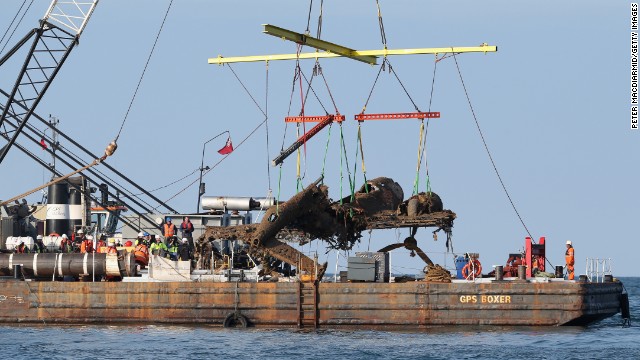 The aircraft is lifted from the English Channel off the coast of Kent.
The aircraft is lifted from the English Channel off the coast of Kent. 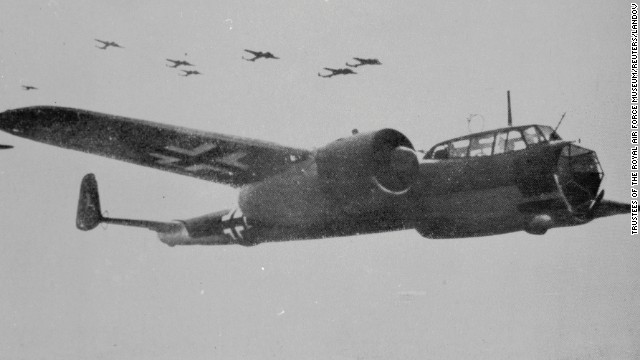 A German Luftwaffe Dornier 17 bomber is seen in flight in this undated World War II era archive photo provided by the Royal Air Force Museum.
A German Luftwaffe Dornier 17 bomber is seen in flight in this undated World War II era archive photo provided by the Royal Air Force Museum. 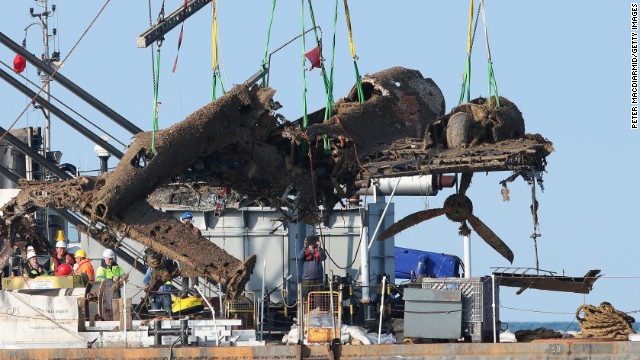 The aircraft is lifted from the waters of the English Channel. It was first spotted on the floor of the channel by divers in 2008.
The aircraft is lifted from the waters of the English Channel. It was first spotted on the floor of the channel by divers in 2008. 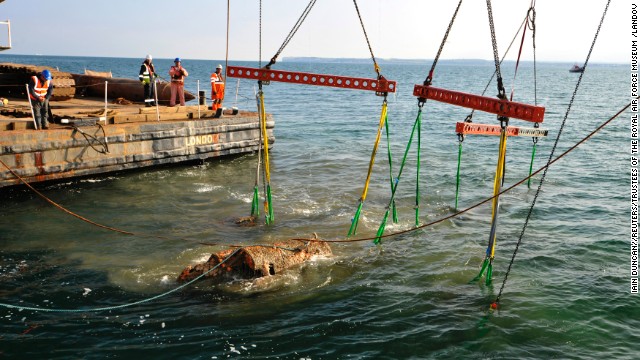 The plane will go on display at the Royal Air Force Museum in London.
The plane will go on display at the Royal Air Force Museum in London. 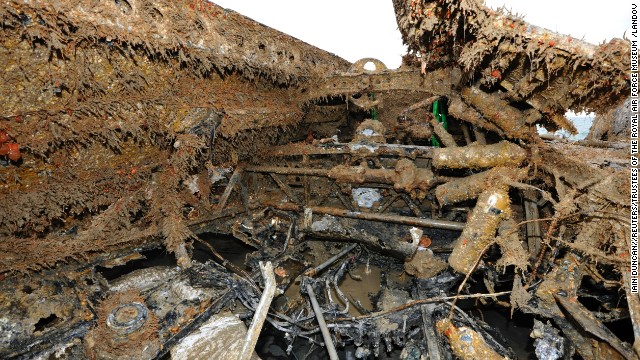 The cockpit of the aircraft is seen after it was raised by the salvage crew.
The cockpit of the aircraft is seen after it was raised by the salvage crew.  Salvage workers inspect the bomber after it was lifted from the water.
Salvage workers inspect the bomber after it was lifted from the water. - German bomber was shot down during Battle of Britain
- Pilot made emergency landing in English Channel
- Divers discovered the plane in 2008
(CNN) -- A World War II German bomber, likely the last of its kind, has been raised from the bottom of the English Channel and will be restored for display in a British museum.
"It has been lifted and is now safely on the barge and in one piece," Ajay Srivastava, a spokesman for RAF Museum, told the BBC.
The Royal Air Force shot down the Dornier Do-17 twin-engine medium bomber of the German Luftwaffe on August 26, 1940, during the Battle of Britain. It was one of 1,500 built by Germany and the last known to be in existence, according to the RAF Museum.
Germany employed more than 400 Dornier 17s during the Battle of Britain, and 200 of those were lost. Most wrecks were melted down and recycled into making planes and armaments for Britain, according to the museum.
The plane raised Monday was damaged in a battle with RAF Defiant fighters as it tried to attack airfields in Essex, the museum said. Its pilot made a belly landing on Goodwin Sands in the channel off Kent, and the plane sank upside down in about 50 feet of water. The pilot and another crew member who survived the crash were taken prisoner and sent to prisoner-of-war camps in Canada, the museum said. Two other crew members died.
The plane remained undisturbed on the floor of the English Channel until divers spotted it in 2008.
"The aircraft is in remarkable condition -- considering the events surrounding its loss plus the effects of spending so many years under water," the museum's website says. "Other than marine concretion it is largely intact, the main undercarriage tires remain inflated and the propellers clearly show the damage inflicted during their final landing."
The museum then stepped in with a nearly million-dollar effort (about 600,000 pounds) to raise the craft and launch a restoration project.
"The discovery of the Dornier is of national and international importance. The aircraft is a unique and unprecedented survivor from the Battle of Britain. It is particularly significant because, as a bomber, it formed the heart of the Luftwaffe assault and the subsequent Blitz," Air Vice-Marshal Peter Dye, director general of the RAF Museum, says on the museum's website.
"The Dornier will provide an evocative and moving exhibit that will allow the museum to present the wider story of the Battle of Britain and highlight the sacrifices made by the young men of both air forces and from many nations," Dye says on the website.
Once the plane is ashore, it will be soaked in a citric acid solution to stop corrosion, the first step in a restoration process expected to take two years.
The plane then will go on display at the RAF Museum in north London.
See the RAF Museum's website with the complete story of the German bomber







